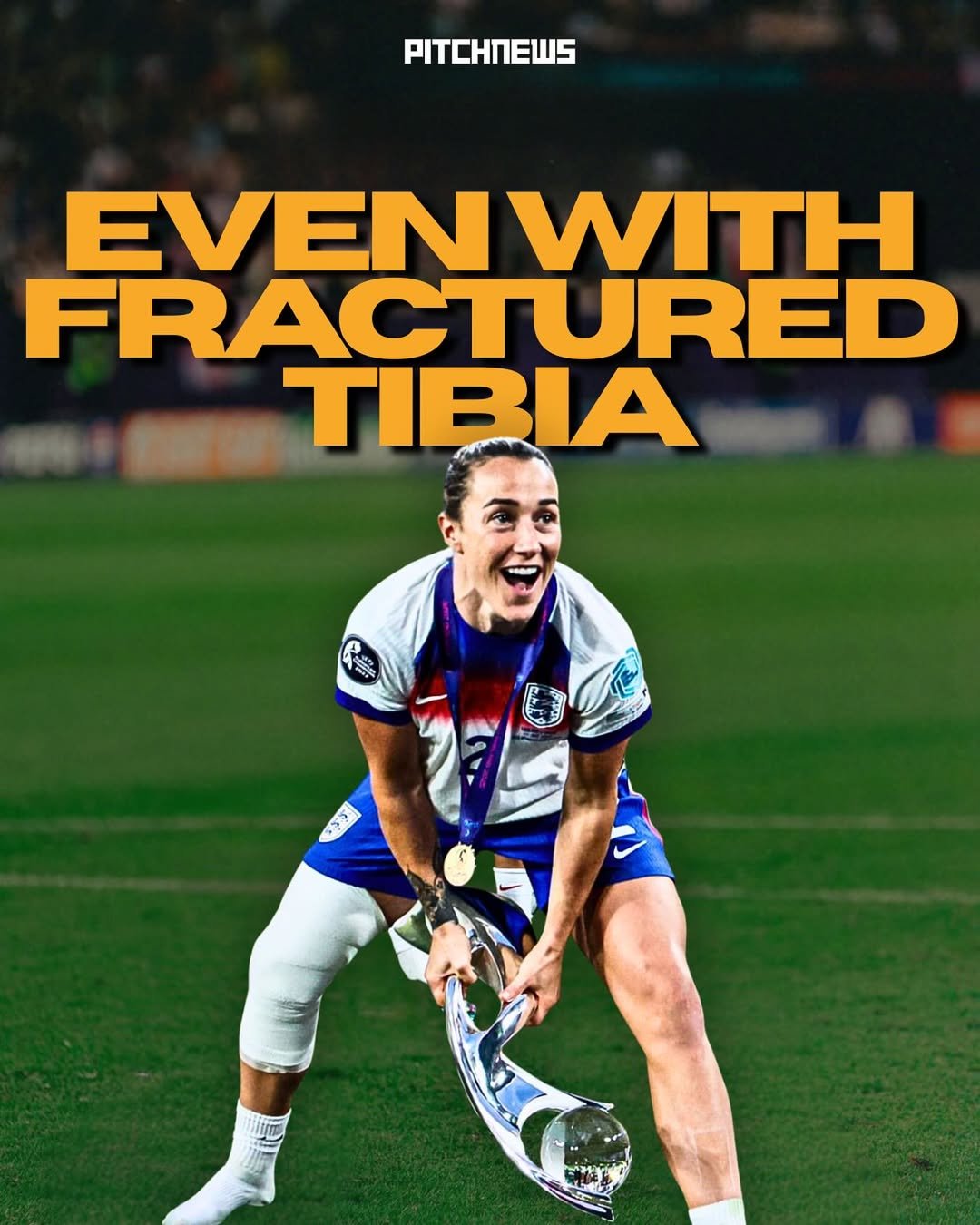Lucy Bronze’s remarkable story is dominating headlines across the UK, after the England defender revealed she played the entire UEFA Women’s Euro 2025 tournament with a fractured tibia. The admission has stunned fans and experts alike, sparking widespread admiration for her dedication and resilience. With the Lionesses now two-time European champions, Bronze’s tale of bravery stands as one of the summer’s standout sports stories.
Defining the Tibia: The Body’s Weight-Bearing Backbone
The tibia, often referred to as the shinbone, ranks as the largest and strongest bone in the lower leg. Running from the knee to the ankle, the tibia supports the body’s weight during every step, jump, and sprint. Its prominent location makes it one of the most commonly fractured long bones, particularly in contact sports and high-impact activities.
A Secret Injury: How Bronze Powered England’s Triumph
Lucy Bronze, aged 33 and the oldest member of England’s squad, played all six matches of the Euro 2025 campaign—including the dramatic penalty shoot-out victory over Spain in the final—while nursing a fracture in her right tibia. The defender reportedly discovered the crack after England’s Nations League match against Portugal on 30 May but decided to push through the pain for the glory of her country.
Speaking to the BBC after lifting the trophy, Bronze revealed, “I actually played the whole tournament with a fractured tibia, but no one knew… I hurt my knee today as well. The girls gave me a lot of love after the Sweden game because they knew what I was dealing with”. Her heroic display included scoring a vital penalty in the shootout against Sweden and marshalling the defence through a gruelling schedule.
Bronze’s secret was known to her teammates and England’s coaching staff. The approach required careful management: the veteran would rest between matches to avoid aggravating the injury, only taking to the pitch when required. “I couldn’t stand taking a huge amount of medication all the time, so I didn’t train all the time, but I just played the games and fought for my team.
The Risks and Realities of a Fractured Tibia in Elite Sport
A fractured tibia is no small matter. It usually demands weeks or even months of rehabilitation, due to the bone’s essential role in bearing weight and facilitating movement. In the general population, a tibia fracture might necessitate a cast, crutches, or even surgery. For a professional footballer, the risks include long-term complications and potential career setbacks.
Yet, Bronze’s determination drew praise from England manager Sarina Wiegman and former teammates alike. Wiegman described the defender’s mentality as “crazy” and “exceptional,” acknowledging that playing on for 105 minutes in the final, with a fracture, was both remarkable and risky for any athlete, let alone someone approaching the twilight of their career.
Teammates hailed her as “not human” for her ability to withstand the pain and contribute so significantly. Ellen White, a former Lioness, told the BBC, “To claim she has just triumphed in a major tournament with a fractured tibia is extraordinary. The pain must have been immense, and she really nailed that shot in the Sweden match”.
Why Tibia Fractures Matter: Insights from UK Medical Experts
Medical professionals across the UK were quick to highlight the gravity of Bronze’s achievement. The tibia is critical for mobility, and fractures can range from minor hairline cracks to severe breaks that require surgical intervention. According to NHS statistics, tibia fractures are often caused by high-energy impacts, such as football tackles or road traffic accidents.
Early symptoms include swelling, pain, and difficulty in walking, which align with Bronze’s description of her experience. Although hairline or stress fractures can sometimes go undetected initially, they worsen with continued activity and may lead to more serious injuries if not properly managed. In elite football, such injuries might entail an extended absence from the pitch.
Dr. Amanda Thomson, a consultant sports medicine physician with years of experience treating professional athletes, commented, “For an outfield footballer to play a month of competitive matches with a fractured tibia is almost unheard of. It demonstrates not only physical toughness but also a high pain tolerance.

The Tibia Beyond Football: A Trending Topic in Tech and Gaming
The word “tibia” is also buzzing online for a completely different reason. Veteran gaming fans have noticed the longevity of the iconic online multiplayer game ‘Tibia,’ which has just received a major update even after 27 years. The game’s enduring popularity and its summer update—including new features and quests—have placed it back on UK gaming forums, offering a lighter take on the trending tibia conversation.
Calls for Player Welfare: What’s Next for Football?
Bronze’s story has not just inspired, but also raised important questions about player welfare, medical transparency, and the drive to win at all costs. Football authorities continue to face scrutiny over how injuries are reported and managed, especially in the women’s game where resources can sometimes lag behind the men’s.
Looking forward, many in the sport hope this episode will fuel fresh debate around player health, the availability of advanced treatment, and the pressure athletes endure on the international stage. Bronze, ever the consummate professional, was quick to champion her team’s spirit over her personal ordeal. “We never stopped believing in ourselves. There was a lot of noise from the outside, but we stayed united and gave everything,” she said after the final.
Final Thoughts: The Spirit of the Lionesses
As celebrations continue around the country, Lucy Bronze’s commitment and endurance have become a symbol of English football’s heart. Her grit on and off the pitch inspires both fans and aspiring athletes, drawing attention not just to the challenges of a tibia fracture, but also to the immense sacrifices made for glory at the highest level.
Conclusion:
Tibia injuries—whether experienced by elite athletes like Lucy Bronze or everyday individuals—require specialised care and resilience to overcome. The exceptional stories and expert resources across the UK highlight both the physical demands of recovery and the strength of those who endure them. With proper support and medical guidance, recovery is possible, reinforcing the importance of attentive treatment and inspiring many with tales of remarkable determination.
Read More: Amber Harrison: UK’s Rising Star
